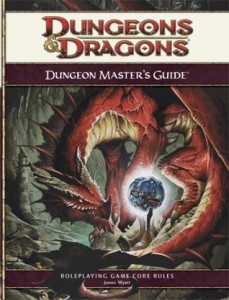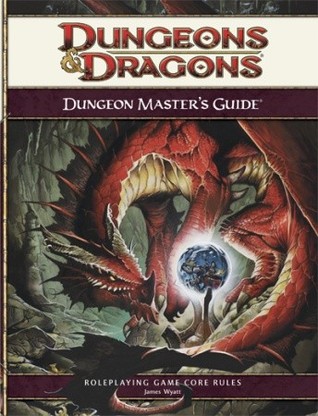 System: Dungeons & Dragons
System: Dungeons & Dragons
This is a little late in the coming, I should have done it this weekend but was busy, forgot, etc. It only really matters because it means my memory is going to be a bit foggier than it normally would be.
I got back into the Friday night D&D game. I left originally because Keep on the Shadowfell was pretty sad in the story department and I was overloaded on games. Right after I left however, the group started the game over in Waterdeep full of political intrigue. The group was evil however, which is a turn off for me because in my experience and evil group always ends up deciding at some point or another that homicide or even genocide is just fine if that is what it takes to get the job done. Still, the DM and I had been talking about what he was doing in the game and I started getting interested. Eventually that game imploded, for pretty much the exact reason I thought it would and another Waterdeep game was born. This one was the “good” characters complete with an epic backstory (fleeing from a town attacked by a Dracolich and her Death Knight Master/Lover) and lots of intrigue. At this point because my other games had calmed some, I was felt ready to jump back in… and boy am I glad I did.
I ended up making 4 different characters to bring into the game, each of them with a single common thread… a wondrous item called the Clamshell of Secrets. A marvelous device that can record and play back sounds. The idea that I had was that my character would be an information broker, someone who bought and sold secrets. The four different characters had different means and motivations for doing so, flavored by their race, class and skills.
The one I picked to play, based on the group composition and other people’s ideas was Ace, a human rogue who is a total mercenary. He’s a thug for hire who allegiance is strangely more to his crew than his pocket. He’s been on the streets of Waterdeep all his life and learned that the only way to get on top is to step on people BUT betraying your own crew is like stabbing yourself in the back, and he’s got a nasty scar to prove it. He’s done bad things in the past and now he’s looking to make something better of himself. Ace is friendly at first but shares little pity for his foes, and he doesn’t expect them to suffer him any mercy. He’s not very smart, he even knows he’s not smart, but he uses his natural predator instincts to the best of his ability.
The adventure was a simple one, at least at first. We were instructed to go into the city sewers and find out who was working against the Baker’s guild down there. We found some undead and an orc who was commanding them, along with some four armed monstrous (but very intelligent) aberration. Turned out he was a member of the Baker’s guild taking orders from another leader within the guild (a woman who we all think is now a vampire). He had been given power by his evil god (name escaping me right now) and wanted to take over the city with an army of undead. Pretty typical bad guy stuff.
Naturally we put a stop to that in a hurry. Destroyed the undead and beat down the orc. We threatened and cajoled him till he spilled the beans on his boss and his motivation. Then we knocked him out to return him to the Guild Hall.
One our way back however, we ran into members of Mercenaries and Guards guild who said we were under arrest for Murder Most Foul! Well, not being one to start fights with the lawful bringers of justice we surrendered immediately, but told them we had to return a member of our guild to the guild hall… guild business you see… something they wouldn’t want to interfere with. They agreed, escorted us back and then things got weird.
As it turns out the leader was actually a doppelganger impersonating the Mercenaries Guild in an attempt to assassinate us. The plan was eventually foiled but not before she duped a whole bunch of us and knocked out our leader… she could have killed him… I wonder why she didn’t.
Later, we were attacked again… this time by an imp who was a personal rival of the previous crew. The battle was interesting as it was composed of a number of non-standard opponents. We we’re caught off guard some but prevailed, largely due to a very intelligent move on the part of Grungebeard Strongarm, our Dwarven Spellscarred wizard who caught the imp and told him to call off his goons.
What rocked
Catching the assassin was very cool for me. I loved feeling like I got some leverage to work with.
Our combat moves were, if nothing else, very fun. As a group we’re more focused on raw damage that special effects, but we still have a good time with the moves we’ve got. In both fights there was a lot of hoping around the board. 4E does not fail in the creation of dynamic conflicts department.
The intrigue between guild politics is fun. I like working for people I’m not sure I can trust fighting people I’m not sure I should oppose. It makes the game of shifting sides viable. For instance, when the Ork said he was working for the interests of the Baker’s guild, I was willing to entertain that he was. Jack Bauer here we come!
The PCs had some good chemistry. One thing I hate in fantasy games is people defining their characters by race of class. One reason I guess I like playing humans is because there is not default stereotypes for humans. So, I was hoping to break the mold of you’re a dwarf and I’m a human so there is no way we can talk about anything else but the fact that we are different because you’re a dwarf and I’m a human. Grungebeard was particularly awesome in this both by agreeing with some of my ideas and, most especially, allowing me to wipe my bloody gut covered hands on his beard. Now that’s a friend!
Dungeon tiles. In one word: Sweetness! They made for very cool, very modular terrain. Be gone battle mat!
What could have been improved
I had an option to learn some information and turned it down because it wasn’t the exact information I wanted. Refusing to take options is something that I hate it when players do. In life we have to compromise, and frankly stories are more interesting if the protagonists suffer setbacks. So why did I get all stubborn and refuse the offer? Who knows, I wasn’t thinking. Anyway, the DM is cool, and when I recognized that I was being a stubborn tard offered me another way to get the information, with a different price this time.
In the first fight I got really frustrated. I missed with all of my attacks and spent half the fight not taking actions due to getting the crap kicked out of me. Baddied rolled well, I rolled crappy. It happens and I shouldn’t get annoyed by it, but I did because the greatest penalty you can give a player is not being able to act. What this means to me is that I need to have a few more “oh shit” options. I’ve got potions I need to remember to use (they are only minor actions after all) and should start planning to have powers that will help me get out of dodge.
Several of the players really weren’t involved in the assassination negotiations and were left with little to do, making that part of the game less fun for them. We agreed however, that next game should be more action oriented so I think all will be satisfied.
I’m missing names and treasure. I know it requires prep work (or quick improve) but we didn’t get the name of the Baker’s guild vampire, nor did we leave with any booty. I definitely could see us getting loot from the Orc (he was pretty nicely set up in the sewers, with a throne, altar, mechanical contraptions, summoning circle, etc) and from the Assassin (just because I set her free, doesn’t mean I wouldn’t have taken a magical dagger off her before I did), and possibly even from the imp fight as the panther might have had an enchanted pelt or the vine abomination could have had remnants from his past life.
 GM: Shaun Hayworth
GM: Shaun Hayworth